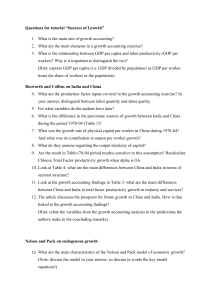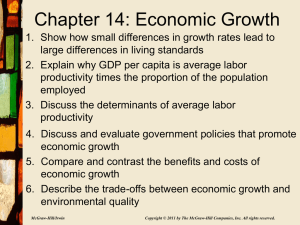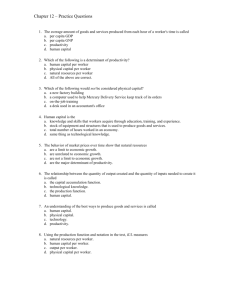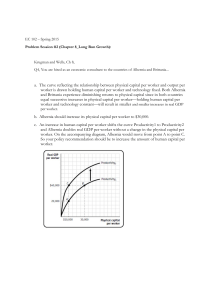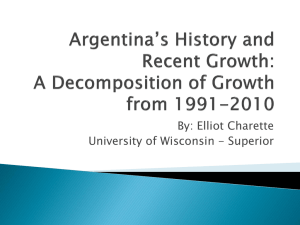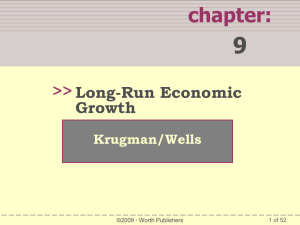Development Economics Practice Questions - ECO360
advertisement
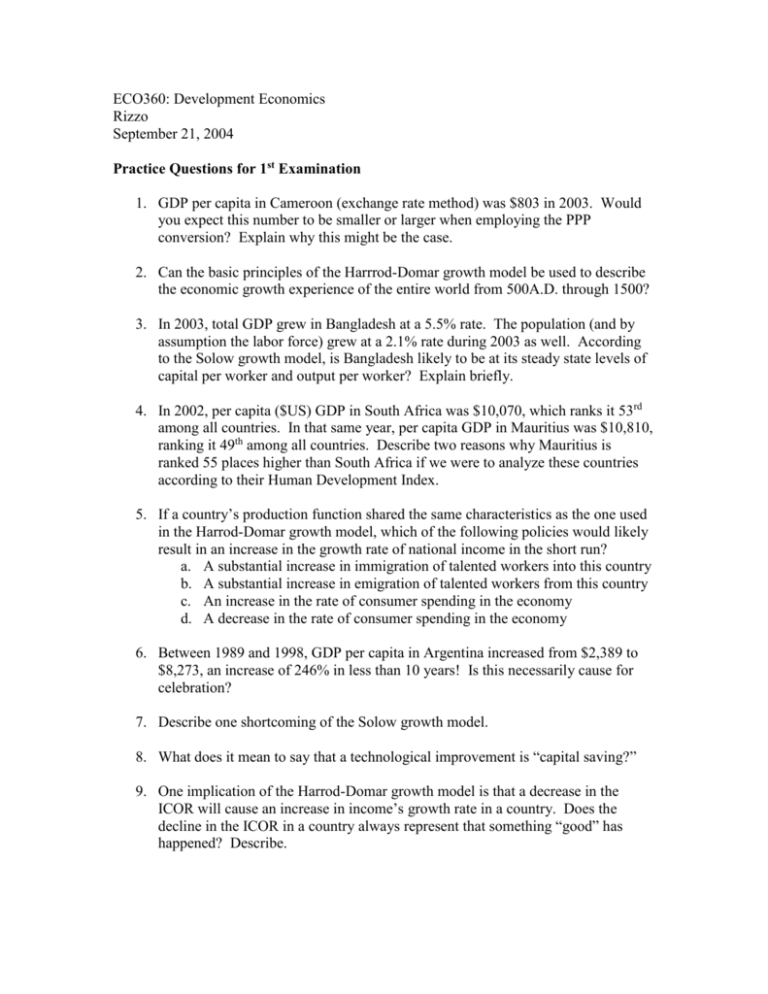
ECO360: Development Economics Rizzo September 21, 2004 Practice Questions for 1st Examination 1. GDP per capita in Cameroon (exchange rate method) was $803 in 2003. Would you expect this number to be smaller or larger when employing the PPP conversion? Explain why this might be the case. 2. Can the basic principles of the Harrrod-Domar growth model be used to describe the economic growth experience of the entire world from 500A.D. through 1500? 3. In 2003, total GDP grew in Bangladesh at a 5.5% rate. The population (and by assumption the labor force) grew at a 2.1% rate during 2003 as well. According to the Solow growth model, is Bangladesh likely to be at its steady state levels of capital per worker and output per worker? Explain briefly. 4. In 2002, per capita ($US) GDP in South Africa was $10,070, which ranks it 53rd among all countries. In that same year, per capita GDP in Mauritius was $10,810, ranking it 49th among all countries. Describe two reasons why Mauritius is ranked 55 places higher than South Africa if we were to analyze these countries according to their Human Development Index. 5. If a country’s production function shared the same characteristics as the one used in the Harrod-Domar growth model, which of the following policies would likely result in an increase in the growth rate of national income in the short run? a. A substantial increase in immigration of talented workers into this country b. A substantial increase in emigration of talented workers from this country c. An increase in the rate of consumer spending in the economy d. A decrease in the rate of consumer spending in the economy 6. Between 1989 and 1998, GDP per capita in Argentina increased from $2,389 to $8,273, an increase of 246% in less than 10 years! Is this necessarily cause for celebration? 7. Describe one shortcoming of the Solow growth model. 8. What does it mean to say that a technological improvement is “capital saving?” 9. One implication of the Harrod-Domar growth model is that a decrease in the ICOR will cause an increase in income’s growth rate in a country. Does the decline in the ICOR in a country always represent that something “good” has happened? Describe. 10. True or False. Two countries with identical levels of GDP per capita, savings rates and population growth rates must experience similar growth rates in national income. Explain. 11. GDP may not fully capture the economic activity in a developing nation due to the large amount of goods produced and services provided that are not transacted in the market-place. Give two examples of these transactions (or lack thereof). 12. Give an example of why a high income country might not automatically be classified as a more developed country by the World Bank. 13. The Human Development Index (HDI) is a weighted welfare measure that goes beyond looking at income disparities as a development measure by including health and education in the index. Describe why this index may also be a misleading development indicator when comparing the well being of two or more countries. 14. For a country that is at its steady-state level of income in the basic Solow model, what is its growth rate in output per worker? a. If the savings rate in this country were to suddenly fall, what would happen to the steady-state levels of capital per worker and output-perworker? b. Can you say anything about what the growth rate of output per worker would be as this economy moves to its new steady state? c. What is the rate of growth in output per worker at this new steady state? 15. If the price of a train ride to work increases in Dhaka but remains the same in New York, and all other prices in Bangladesh and the U.S. remain unchanged, what will happen to the measured value of the Taka as compared to the U.S. Dollar? 16. Describe, in simple English, what this expression means: k = sy – (n+)k … (the letters are all lowercase)


